Superman is a White Boy
by J. Lamb (Snoopy Jenkins)
So here’s what you already know.
American superhero comics today present White male power fantasies in sequential art for meager and dwindling profits. When television production companies and feature film studios greenlight action dramas that feature mainstream superheroes, the visual narratives they offer display muscular Anglo-Saxon men upgraded with special abilities who oppose nefarious, off-kilter Eurotrash to preserve public safety. Token women and people of color bestow selfless assistance, and our protagonists foil their deranged nemeses’ dastardly plans. Roll credits. Stunt sequences that feature Anthony Mackie’s Falcon and Scarlett Johansson’s Black Widow will no doubt add amazing grace under assault rifle fire in Captain America: The Winter Soldier, but Chris Evans’ brawny blond Captain America plays the Hero, the last best defense freedom deploys against global catastrophe.
Pretty standard, right?
And if you read comic books where men incite hope by flying unassisted with flapping scarlet capes or watch trained martial artists shoot arrows with perfect accuracy at moving targets or enjoy quirky teenage Millennials spray spiderwebs to swing through Manhattan like frenzied lost acrobats, chances are this monochrome status quo does not faze. How can it? White people are the stars and the scenery in comic books, the standard and the outlier. If comics, like all speculative fiction, imagine a recognizable tomorrow today, the American comic industry – Warner Brothers executives and DC Comics editors and Justice League of America pencillers and Wednesday single-issue comic buyers alike – continues to print and purchase stories set in a world where humanity is White and human variation is never heroic.
Race and gender minority superheroes present pale knockoffs of the White male power fantasies that transcended comic panels decades ago. What was Manhunter but a low budget Nightwing who replaced the tonfa with a glowing metal rod? Under Reginald Hudlin’s pen, Black Panther explicitly devolved into an African Captain America, known more for marrying the most famous African superhero in American comics than his own exploits. Often it’s more obvious than the Panther: Bruce Wayne, Hal Jordan and Tony Stark all have protégé heroes of color whose diversity splash carbon copies their predecessors’ methods and abilities. Cassandra Cain, John Stewart and James Rhodes vary widely in popularity; in comics, ancient history trumps modern innovation. Nothing ever really changes in panel, so audiences are trained to prefer old-money discipline, test-pilot adrenaline, and Silicon Valley snark over high-melanin’s mute, brooding, and warlike.
In our world, the most famous, most powerful, most influential superhero ever devised is a straight White man. Here, meaningful diversity in superhero comics is not possible. The superhero concept is a racial construct, used primarily to derive profit from printing White male power fantasies ad nauseam for a core audience of ostracized children. Nostalgia generates revenue. Lest we forget, the 616 Universe and the New 52 write action dramas that operate under certain observable laws.
• Death is relative.
• Gravity exists, but most metahumans ignore its pull.
• Lucky genetics confer cosmos ending power.
• With great power, comes endless excuses for new and more horrible tragedy.
• Three percent body fat physiques do not require exercise.
• Strong wills, not quantum mechanics, manipulate fundamental physical laws.
And heroism, in word and deed and mind, is a White thing.
Some supportive comic media critics implore us to regard the irrepressible Whiteness Golden and Silver Age comics exult as historical happenstance, a coincidental and unimportant default imagery used by comic writers and artists to denote humanity, with no racial intention whatsoever. This logic is flawed, but seductive. When Superman and Batman and Spider-Man reflect universal archetypes, audience race and gender and class and religion and intellect and athleticism melt into a meaningless ether defined only by hope, justice, and great responsibility. The militarized identity boundaries that separate us from our fellow men decompose, and a fluid transcendence replaces musty old divisions. In essence, nerds of color can imagine themselves kissing cirrocumulus clouds amid the chilly troposphere as the iconic S-curl above their inviting warm brow collects ice crystals while dawn breaks in heavenly perfection. When Whiteness is default and race is meaningless, we can believe that all men are created equal, we can believe that all men can fly.
We should avoid surprise when the darker nation’s comic fans applaud cross-racial casting of traditionally White male superhero roles, when rampant blerds dream of Lupita Nyong’o as their favorite midnight mutant, when nerds of color petition for an Asian American Iron Fist amid popular Netflix’s new-age straight-to-video. Social inclusion’s desperate yearning drips from each example; these are conformist cries, conservative activism from patient racial integrationists whose most fervent plea is to wake up one beautiful Wednesday morning replete with azure skies above singing bluejays and freshly-cut neighborhood lawns, step out of queen-sized Sleep Number luxuriousness, speed through a hot shower and foamy shave, wolf down egg whites and orange Tropicana, and drive toward cubicle drudgery after wet kisses for the patient wife and strong hugs for the babbling infant, stopping only to bound into the local comic book shop’s hermetically sealed cacophony to purchase a Superman for All Seasons remake that casts a muscular John Cho as the all-American demigod. Norman Rockwell would be proud.
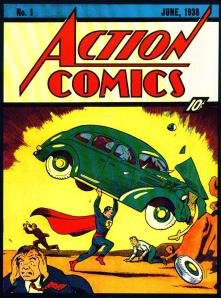 Wherever bright spandex and ebony Kevlar meet Olympian pectorals and Crossfit abdominals, nerds of color beg for more race and gender inclusion, in the panel, on the screen, behind the mask. I do not consider these pleas ethical. Action Comics no. 1, printed in June, 1938, gave birth to the modern superhero, and features the iconic cover where an unnamed figure wearing a tight blue leotard, matching red briefs and boots, and a flowing scarlet cape, lifts a passenger car above his head and smashes the vehicle on a nearby rock as White male witnesses in business suits scurry in abject terror. Shock and awe. One man crouched on the ground closest to the action curls inward with deference, transfixed by the reality bending scene but physiologically conscious of his role. Regard the primal majesty Superman’s impossible strength commanded among regular men from genesis. Geoff Johns recasts this Superman superiority complex in the New 52 Justice League reboot, where Batman and Green Lantern chase Parademons to Metropolis, and face the unstoppable martial force that is the Superman, angry. The most powerful weapon in the universe means nothing to the most powerful man in the universe, and shattered green constructs litter downtown Metropolis while Batman and Green Lantern pinball from Superman’s relentless onslaught. Against Superman, all humans are beta males, cowering along the cave shadows, waiting for the alpha’s rage to subside, praying calm on the apex predator.
Wherever bright spandex and ebony Kevlar meet Olympian pectorals and Crossfit abdominals, nerds of color beg for more race and gender inclusion, in the panel, on the screen, behind the mask. I do not consider these pleas ethical. Action Comics no. 1, printed in June, 1938, gave birth to the modern superhero, and features the iconic cover where an unnamed figure wearing a tight blue leotard, matching red briefs and boots, and a flowing scarlet cape, lifts a passenger car above his head and smashes the vehicle on a nearby rock as White male witnesses in business suits scurry in abject terror. Shock and awe. One man crouched on the ground closest to the action curls inward with deference, transfixed by the reality bending scene but physiologically conscious of his role. Regard the primal majesty Superman’s impossible strength commanded among regular men from genesis. Geoff Johns recasts this Superman superiority complex in the New 52 Justice League reboot, where Batman and Green Lantern chase Parademons to Metropolis, and face the unstoppable martial force that is the Superman, angry. The most powerful weapon in the universe means nothing to the most powerful man in the universe, and shattered green constructs litter downtown Metropolis while Batman and Green Lantern pinball from Superman’s relentless onslaught. Against Superman, all humans are beta males, cowering along the cave shadows, waiting for the alpha’s rage to subside, praying calm on the apex predator.
Now imagine Superman Black. Imagine June 1938, where Superman Black smashes Henry Ford’s engineering prowess on large rocks while White businessmen run for their lives. Imagine the New 52 when Superman Black lacerates token opposition from Gotham’s urban legend and the Green Lantern Corps’ most fearless space cop, without regard for property damage or city prohibitions against street brawls. Superman Black, with hands that could squeeze diamonds from bituminous coal and eyes that can incinerate humans with errant glances, later dates a Grecian warrior goddess to emerge as popular culture’s most famous power couple, KimYe with extraterrestrial blood, mythological muscle, and tighter clothes. The point? An African American Superman, with kinky, close-cropped black hair, thick, half-reddened lips, high cheekbones, and wide nostrils all bathed in dark Lindt chocolate, resists White supremacist logic, negates Black inferiority mythology, and threatens the established order. Superman’s disconcerting physicality, tempered by his omnipresent cheerfulness calmed and invited White comic readers to imagine themselves as gaudy Caucasian perfection, the Anglo-Saxon ideal. Static in panel, without speech bubbles or thought balloons, Superman Black warps the absurdly developed skeletal striated muscle and eternal hopefulness fans rejoice into a clear and present danger to the American experiment, an unholy figure derived from Tea Party paranoia, Barack Obama’s calculation and Terry Crews’ musculature. Public Enemy’s prescience abounds – were Superman Black introduced on the game-changing Action Comics’ cover, White America would have yet another reason to fear a Black planet.
It would be easy and incorrect to regard superhero comic media as irrepressibly racist and sexist; though the comics have routinely reproduced racial stereotypes and misogynistic narratives to sell books, superhero comic media does not require hostility toward human difference. What is clear is that the superhero concept requires Whiteness to operate. Only in White male power fantasies can people blessed with skin privilege and bodies carved from living marble wield heat vision or super speed or unbreakable claws against indigent criminals from broken homes who lack high school educations. In these White male power fantasies, industrial titans blessed with technological genius or generational wealth remake themselves with advanced titanium armor or expert ninjutsu into quasi-deputized law enforcement officials whose crimes against public order never meet social sanction. Only in White male power fantasies would women display abundant porcelain cleavage or don starry microskirts to fight crime. When nerds of color insist on visible diversity to inoculate modern readers from comic industry prejudice, they fundamentally misunderstand what superheroes are, what Superman is.
Superman is a White boy. Superheroes are White people. Superhero morality exacts the Melian Dialogue’s ‘might makes right’ overwhelming force realpolitik with every onomatopoetic Biff! Bam! Pow! gut punch and karate chop combo. Shuttle diplomacy or natural resource husbandry rarely bring metal-faced technological sorcerers to heel in superhero comics; superheroes often save planet Earth through fantastic violence judiciously applied. I submit that the superheroic reflex to subdue evil with violence directly descends from Thucydides and Alexander, from Richard the Lionheart and Dwight Eisenhower. Superheroic morality requires Western Civilization’s literary canon and political history to justify its callous disregard toward collateral damage. To be clear, superheroes routinely consider innocent noncombatants’ lives (if not their property) when they confront cosmic despots or sociopathic steroid abusers, but comics document the never-ending battle in colorful tomes largely sold after Nagasaki and My Lai, after the time when total ignorance of American military supremacy was vogue. When Wally West as the Flash pulls a hysterical single mother out of her overturned silver 2001 Honda Civic and carries her to safety from Apokoliptian cannons at breakneck speed, comic fans favorably regard his heroism; any dialogue from the frazzled thirty-something file clerk will remind readers how grateful she is to escape otherworldly horror with her life. Superhero comics don’t care about the destruction of this woman’s sole transport; when the gas tank explodes behind the Flash’s blurred strobe, this woman loses her credit cards, her driver’s license, her insurance documents, her six-year-old daughter’s vanilla birthday cake with its beloved artificially flavored strawberry icing. The comics don’t recognize the heroism of this brave woman’s seven-month struggle to rebuild her finances and maintain her identity following Darkseid’s incursion; all we know is for that poor woman, the Flash saved the day. He’s a superhero. Isn’t she grateful?
Let’s be clear: to identify necessary Whiteness in the superhero concept is no indictment. Whiteness is no more a curse than Blackness. Whiteness is not inherently evil, White people are not naturally oppressive. There exists no genetic propensity for group violence in the human genome. None. The point here is that the superhero concept’s racial identity actually matters. For comic creators past and present, Whiteness is not a human default, it is a political choice. Steve Rogers flag-waving jingoism and Bruce Wayne’s aristocratic paternalism can be applied to race and gender and sexual minority superheroes, of course. But telling Captain America’s story or Batman’s tragedy requires some conscious position on and understanding of Whiteness, its sociological and economic impacts especially. Racebent comic properties and cross-racially cast superhero roles don’t interrogate why White identity matters; out of tawdry racial tribalism these superficial ideas ignore character history to allow people of color the high honor of low pantomime. Black Panther and Mr. Terrific and all the race and gender minority superheroes owned by Disney and Warner Brothers suffer from abysmal popularity when compared to A-list White male superheroes. This is neither accident nor racism. This is Xerox. Carbon copies can’t hope for pure truth.
Bottom line: even one’s favorite race or gender minority superhero operates within a paradigm defined by Western perspectives on violence and ideal beauty, in an industry dependent on White male consumer support. Miles Morales needs White fanboys far more than his excited blerd following to place Ultimate Spider-Man in the black. Yet without Brian Michael Bendis’ notable support, Morales risks navigating comic milk cartons like Judd Winick’s Grace Choi. The superhero concept is a racial construct designed to appeal to Whiteness; racial integrationist fanboy praise for female Robins or Black Spider-Men only ensures minority patronage for Establishment FUBU. The Establishment can produce some amazing comic literature (especially with Alan Moore’s pen and Neil Gaiman’s keyboard) but the industry has yet to deliver non-White racial authenticity within the superhero concept. It can’t. Only a one-dimensional, unconsidered, infantile race and gender politics supports racebending and cross-racial casting as panacea for White male cultural hegemony in comic media. An Asian American Iron Fist would not challenge Wu-Tang mysticism or Chinese martial arts stereotypes; this popular petition makes clear that some nerds of color are more concerned with being seen than with being seen as human.
Race is not seasoning, gender is not spice. The melting pot should cost us something.
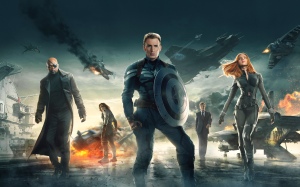
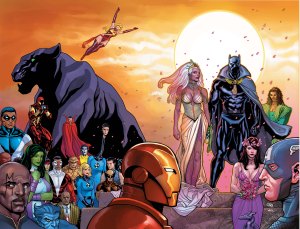
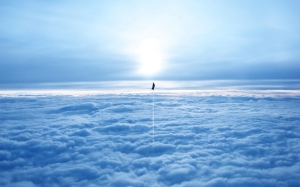

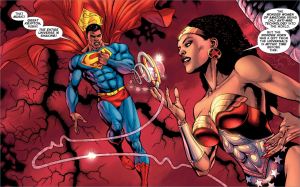
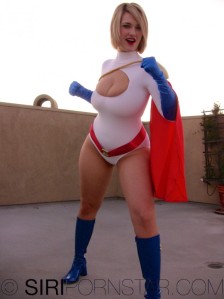
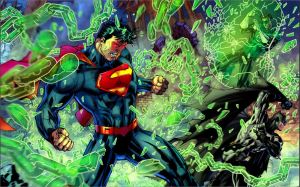

The DCAU (aka the dini-verse/timm-verse) portrayed Superman with tan skin. He was technically assumed to be white (the tan could have been an animation choice), but in retrospect a tan skinned man with jet black hair isn’t what you assume is a typical white person. Batman also had tan skin and jet black hair, but he “balanced things out” with blue eyes.
I don’t know…
Soduhson – thanks for reading and commenting! To my knowledge, the DCAU Superman was always considered White. Even though the art deco style often added deep tans to Clark Kent and Bruce Wayne, a stronger case can be argued for Lex Luthor and Harvey Dent, arch-villains whose swarthy skin was used as a visual cue to differentiate them from the superheroes. But I contend that Superman/ Clark Kent has always been considered White. Even when a more Mediterranean skin tone is used to associate Superman with worldliness and travel, even when hapa actors like Dean Cain play him on television, Superman is a White boy. Without that consistent trend, I doubt Superman would have maintained his nigh-universal fanbase since 1938.
[…] Superman is a White Boy – Snoopy Jenkins […]
Great read, one with which I largely agree (I actually wrote a piece on a similar subject a few years ago, linked at the bottom of the page).
One thing I wanted to broach–while the cultural paradigms of the US and Western Europe inescapably bear the influence of white (cisgendered heterosexual) male hegemony, I do think the uniqueness of the Black US American experience does shine through in some mainstream comic book characters–Static being the primary example. I think part of what makes Static (and, to a lesser extent, Miles Morales–I’m somewhat dismayed at how Bendis really takes a Central Casting approach to Miles’ Blackness) work is the fact that, with the exception of the new 52 debacle, both characters actually acknowledge their marginality within the context of the larger world. Yes, superheroes are largely a Nietzchean [sp] white fantasy, but I don’t necessarily think that Static, in particular, is penciled into that mold.
http://goodmenproject.com/komplicated/opinion-static-miles-morales-and-black-heroes-darrylzero/
Darryl Zero, thanks for reading and commenting! Your comment – and the excellent article you wrote – identify something I wanted to interrogate further in this post but cut for length, namely how race and gender minority superheroes interact with a superhero concept that highlights White male power fantasies. Certainly we can agree that many Black heroes exist as racially inflammatory stereotypes largely as a result of their emergence from White imaginations (Luke Cage offers a prime example), but your assertion that Static Shock (and to a lesser extent Miles Morales) provides the example of the Black superhero who consciously recognizes his marginal status intrigues. My knee-jerk response is that my interaction with Static Shock has been informed mostly by DC Animation. As I discuss in these podcasts (Knocking Heads One & Two), I was not exposed to the Milestone canon until very recently, and lack familiarity with Static Shock’s source material.
So while I’m not in a position to render a final judgment on your suggestion (a later post will take on race and gender superheroes with more depth) I’ll say that I’m skeptical that Hawkins and Morales really escape the paradigm. It’s not just about their approach to diplomacy vs. violence or the cultural cues embedded into their language, but whether Bendis and McDuffie succeeded in rethinking the point of the superhero with these characters. In contrast, after two short issues G. Willow Wilson’s Kamala Khan is such a Peter Parker rip-off it appears that selling Spider-Man’s origin to teenage girls is the only point of that character. This is the trap my reading of Static Shock will have to avoid in order for me to agree with your premise. But again, thank you Darryl Zero. Your article and comment have given me much to consider.
I don’t have anything to add to the debate beyond complimenting you on a brilliant piece of writing – it has given me a remarkable amount to think about. Thank you.
Thank you for reading and commenting, Mr. Molcher! I appreciate the compliment!
I like the basic thrust of the article, with respect to white supremacy in comics. However, I also think you’ve inadvertently taken a Eurocentric perspective when you talk about “Wu Tang Mysticism and Chinese martial arts stereotypes.” The narrative tradition of fictional Chinese martial arts heroes has existed at least since the novel Water Margin, which predates significant Western colonialism in China. The novel itself is probably a collection of oral traditions as well.
My issue with the transplantation of the transplantation of the Chinese martial epic tradition is less with the fact that it happens, and more with fundamental misunderstandings of what, to me, are the salient features. People get caught up in the action aspect (look, cool moves!) and the quasi-magical powers (his stance is immovable/his fingers like steel rods) and miss that the stories about about personal debts of honor and conflicting loyalties.
The narrative tradition is flawed, I’ll admit that– notably misogynistic, among other faults. It is, nonetheless, a very human tradition, and I believe that you err in, ironically, denying Chinese people agency by calling martial arts heroes a stereotype.
Mr. Fong, thanks for reading and commenting! I didn’t give enough space to that detail in the argument here, but the comments on “Wu Tang mysticism and Chinese martial arts stereotypes” are intended to illustrate the methods by which Western fans of Chinese martial arts heroes examine their enjoyment of that genre through crass commercial parody. The Wu Tang to which I refer is the rap collective Wu Tang Clan, not the original movies and stories.
With this type of cultural appropriation, I contend that misunderstandings of salient features are inevitable. Again, I’m not suggesting that Western martial arts drama fans can’t enjoy that material; I suggest that when Asian American comic fans petition Marvel Studios and Netflix to cast a Chinese actor as Iron Fist, they realize that within the domestic American context, Asian martial artists have too often been used for parody and farce, without respect for their genre’s traditions. In the States, I think people only care about action shots and supernatural special effects, not the ethical and moral quandaries characters in that tradition face.
Great article. Thank you for writing it. This does an excellent job of articulating ideas I have never been quite able to articulate. I do have a question (though perhaps I will just be asking you to repeat yourself).
I understand (and agree) with your argument that Whiteness is an inherent requirement of the superhero genre, but do you believe that this is an irrevocable quality of the genre? Is it possible that at some point in the future, as trends in superhero comics change with time, this quality could cease to be inherent to the genre? Or would a comic that manages to cast off the autocratic violence so central to superheroism cease to be a work of superhero fiction?
I am thinking specifically of recent comics like Soule/Pulido’s She-Hulk or Wilson/Pichelli’s Ms. Marvel. Ms. Marvel/Kamala Khan seems like a perfect example of the exact kind of problematic conformism you describe in your article. Just another Miles Morales. But aside from gestures to diversity, these comics also feel like they are taking a different approach to story and the uses of violence, moving away from the theme of violence as solution. Can a comic that contains superheroes but subverts its most deep-seated conventions speak to a broader race politics? If so, in doing so, will it cease to be what you would define as a superhero comic?
Keith F – thanks for reading and commenting! Your question prompts another post to fully answer, but here are some preliminary thoughts.
Superhero comics require Whiteness to operate today. It’s not clear to me what superhero comics without the racial identity I’ve discussed would look like, but I don’t believe that readers today would recognize those works as superhero comics. The fantastic violence we find in superhero comics needs no further discussion, but that’s only one dimension with which we can identify these works’ racial background. Recently, the controversy the Teen Titans #1 cover illustrates the other major difficulty with superhero comics – its knee-jerk appeals to teenage White male sexuality to sell issues.
My girlfriend jokes that all the superheroines in comics possess not only double-G cup busts, but also surgically implanted internal brassieres, because artists routinely ignore gravity and/or clothing logic to deliver obnoxiously spherical breasts to comic fans. It would be interesting to read comics where these conventions were not applied, but it’s not clear how editors and marketers would sell books that dialed back metahuman violence, reflected actual human physicality among men and women, and respected street-level race politics to comic fans raised on Byrne and Johns.
And sadly, I don’t believe that Wilson/Pichelli’s Ms. Marvel moves us closer to those superhero re-imaginings. Reading the first two issues, I was left with Peter Parker in brownface who faced off against a gender confused Flash Thompson and parents so comically dismayed by their daughter’s actions that I recalled old Will Smith singles. Wilson & Pichelli’s Ms. Marvel may appeal to a different demographic than your standard Avengers fare, but to my perspective it’s a standard superhero comic altered slightly to appeal to teenage girls, not a new dawn of progressive comic writing.
And I’ll have to read Soule/Pulido’s She-Hulk ASAP. But I may just be pessimistic; please tell me, what do you think?
” Black Panther and Mr. Terrific and all the race and gender minority superheroes owned by Disney and Warner Brothers suffer from abysmal popularity when compared to A-list White male superheroes. This is neither accident nor racism. This is Xerox. Carbon copies can’t hope for pure truth.”
I’m fucking stupid, so can you just tell me whether or not you’re saying a non-straight white male superhero simply won’t be received as good as a straight white male superhero *because* the archetypal superhero is a straight white male informed by the experience and worldview of straight white men?
Stupid Person – thanks for reading and commenting! To answer your question: yes. I’m saying that Black superheroes are not as well received as their White counterparts, precisely because they reflect straight White male perspectives more than anything authentically Black. Happy to clarify.
First of all let me say excellent piece. This type of candor is rarely seen outside of private, like-minded audiences. I have to agree with you on all points. This type of blatant self-image glorification is prevalent in our society. It’s roots are deeply embedded in history and it is apparent in all facets of mainstream media. A prominent figure, if not Caucasian, must be at least in-part Caucasian. Example:The 2008 election was haunted by the sensational feeling that there would be a black man in office. In reality, most of the people who were voting/not voting for Obama were arguing over the fact that he was either black or half white. Why was it so important? Well because an all black POTUS is just unsettling to many.The cultural image of what is considered right and good has been taught generation after generation, especially to the “blerds” as you so quaintly pointed. It is just effective conditioning. Through mis-education minorities just simply don’t understand what’s going on in this overall process. It is seen in TV commercials, magazine ads, and any other form of marketing. There can be all kinds of minorities in an advertisement but most likely, front and center, it will be a buxom blonde or some other blonde haired blue-eyed individual. I often find my self walking through a department store trying to ignore the pictures on the walls with the laughing little white girl surrounded by mixed girls and the one little Asian boy off to the side smiling. African American, Latino American, Asian American saviors are just plain unpalatable in thought. Comic books are just a way to personify that image of the type of being that is acceptable in society. A strong, noble, brave, perfect White Guy always comes swooping in to save the day because … who else can?
[…] — go watch!), I have no particularly love for superficial diversity that fails to challenge the inherent failings of the superhero genre; last week’s announcements seem like yet another skin-deep comic book diversity initiative […]
Isn’t your usage of the word “boy” to describe a white man, whether real or fictional, emblematic of your bigotry?
Shawn, thanks for reading and commenting! That’s certainly a possible interpretation, though the line ‘Superman is a White boy’ uses that word in a familiar, colloquial sense, much like African Americans have routinely referred to White males who have gained a measure of acceptance in African American cultural circles, like in the lyrics to Wild Cherry’s “Play That Funky Music”. Frankly, it both references Supes’ necessary Whiteness while recalling his familiarity for legions of dedicated fans of color. From my point of view, it makes sense. Do you disagree?
No, I don’t think it makes sense, even when you examine your usage of the word from a very narrow perspective. The fact is, it’s disrespectful to call a white man a boy, and most white men would take offense to that, no matter how much you try to intellectualize it. I’m guessing you would not want to be called black boy.
Personally, if a man who is not my friend calls me boy to my face, regardless of his race, he will likely have to deal with my fist planted in his fuc*in’ face.
Shawn, let’s be clear. I obviously do not find the usage of ‘boy’ offensive in this this context. I’m glad you read my essay, and I hope you share it widely. But you should know – this post articulates an argument against diversity initiatives in comics, specifically because of the racial history of superhero comics. An understanding that Whiteness matters informs the entire piece. So no, the idea that I do not display proper respect to White masculinity in this piece does not persuade.
And we are not friends, Shawn. I obviously do not know you, or fear your fists. Your capacity for violence is not relevant.
This is wonderful. It really transcends a blog post and seems more like a bell hooks essay (high praise). While I do NOT disagree with your premise, I would argue that early incarnations of many superheroes reflects the Jewish immigrant experience of their creators. While very much still the imbodiment of idealized fantasies they likely had for inclusion in Anglo white hegemony, I do find context to be useful in (not necessarily agreeing with) understanding the perspective many superheroes come from. The nebbish pursuits of science and writing can be shed to become the Talmudic embodiment of bringing justice to those denied it. I see this ethos present in the wonderful new Ms. Marvel with Kamala. Again, it’s about ascension within established racialized hierarchies (rather than questioning the nature of those hierarchies…). Maybe I’m naive, but it’s a start?
Samuel Ewing
I appreciate your well defined, academically modeled article about superheroes/white male power fantasies. Another part of this issue is for African Americans to consider an effective strategy or strategies for presenting our own paradigms on “superheroes.” I just don’t think anyone else can convey those concepts of the superman for African American culture and our experience than we can. I’ve been researching the original and ancient idea of the superman as it came into being in Africa. The differences between this superman and American superheroes is striking. Furthermore, I’m researching the concept/paradigm of the history of the African American Superman in African American Culture. I am going to write a book on this much neglected and important subject. It is vital for African Americans to understand that we have many historical supermen who have saved the day for humanity from the African American community, who have raised the standard of living for the human population globally via their inventions, defeated diabolical evil, influenced art/culture in an uplifting fashion, and have racked up many achievements. After all, DC Comics had their Superman and their Flash, but we had Jesse Owens and Muhammed Ali, Supermen who transcended their sports.Supermen who did impressive exploits outside of sports.
When examining the high standards that ancient Africans and African American culture has set as requirements for being a Superman; African American men and women have met and exceeded those standards. This connection to our traditions and knowledge on this matter has been lost, neglected, and forgotten. It’s time for us to remember again and never forget our legacy of the Superman in the African American Consciousness. For those who are interested, take a look at the African American “hard moral man” as one of the paradigms of the Superman.
Fascinating thesis. Very well articulated. Much ruminating inspired.
IK
[…] sections connected to those posts) about the (im)possibility of the black superhero given the white supremacist underpinnings of the genre. I’ve written about this before, back in 2013, when I used a Trayvon Martin-themed strip […]
Just to clarify something please. Unless I’ve misunderstood, are you of the belief that what the superhero ultimately is represents inherently a white construct? As in the person with abilities beyond most humans using those abilities to preserve life/save people, which can involve physical confrontations with criminals/super villains? Or do you mean something else? E.g. that it’s a white supremacist construct hence the lack of non-white characters and the poor depiction of the few which do exist?
wow, this is a helluva piece – thank you!
This article is pure horseshit. Beating up criminals to enforce justice is hardly a white notion and pretty much every culture has been imperialist at some point (look up Japan in World War II, or the Aztecs; some african nations were pretty imperialist).
[…] Turtle fared when it came to combatting the racism inherent in the superhero genre. If you believe J. Lamb, then Yang must have failed. If you believe Noah Berlatsky, then Yang clearly failed, in the face […]